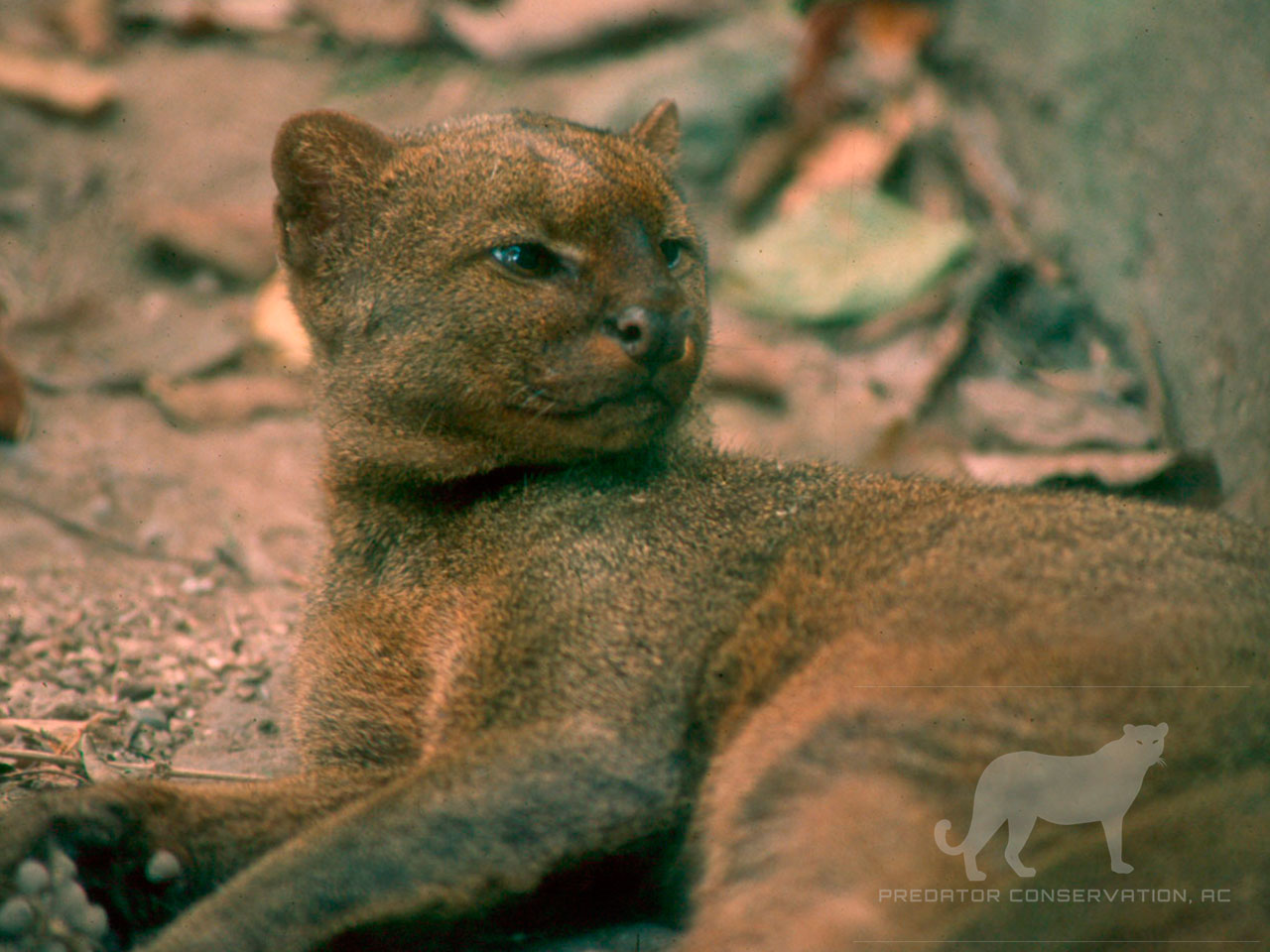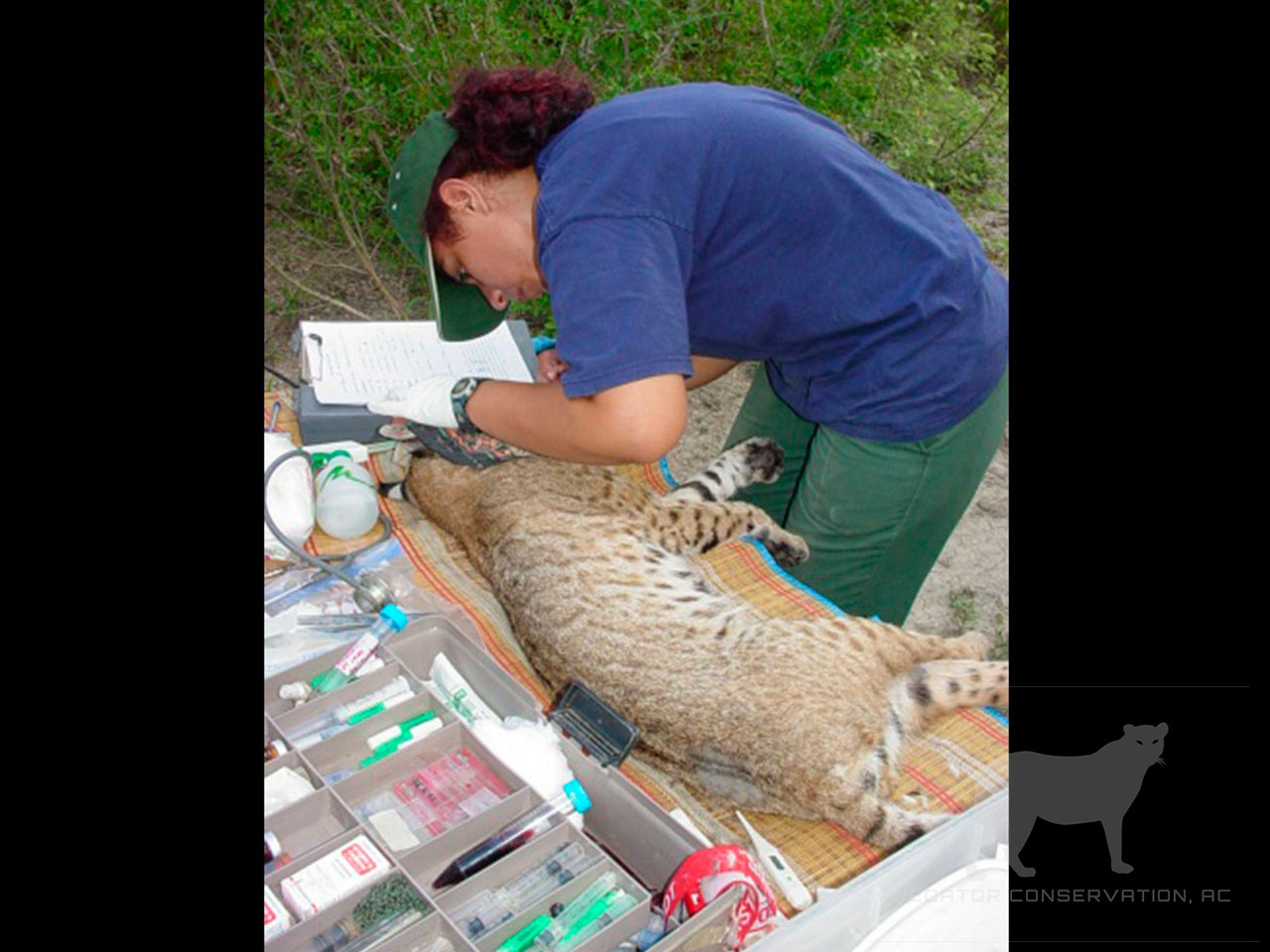Gallery
American Felines
Jaguar
The jaguar (Panthera onca) is probably the wild carnivore that generates the most attention in the places where it lives. Its corpulence, the color of its skin and its habits, make this feline a formidable species. However, it is not a well know species. The jaguar is considered an endangered feline throughout its range from Arizona, USA. to the north of Argentina. In Mexico, according to the last national jaguar census (CENJAGUAR), it is estimated that the jaguar population is around 4,000 individuals; however, the gradual destruction of the natural habitat due to pressure from agricultural exploitation has generated that the distribution of this feline is affected. The most serious problems that affect the jaguar are habitat destruction and poaching, much of which happens due to the conflict that exists between the jaguar and livestock farms, since this feline sometimes preys on domestic livestock.
Ocelot
The ocelot (Leopardus pardalis) is a species of carnivore from the felid family widely distributed on the American continent, where several subspecies are found. Its distribution range goes from southern Texas in the United States to northern Argentina. Although it is a neotropical feline, it has great versatility in the use of habitat, being able to live in humid rain forests, mountain areas and even semi-desert areas. The ocelot is considered a nocturnal feline, although it also has some activity during the day, especially on cloudy days. The ocelot is considered an endangered species and the main threats are: poaching for its skin and also the destruction of its natural habitat.
Jaguarundi
Although the jaguarundi (Herpailurus yagouaroundi), due to its diurnal habits, is the feline species that can be observed the most in the wild, it is also one of the least known feline species and little is known about its ecology. However, in Mexico it is considered a threatened species and, of little importance in the rest of its distribution range, that goes from northern Mexico to northern Argentina. The last report of a jaguarundi in the United States was of a roadkill specimen found in the state of Texas in 1996. The jaguarundi has two color phases, one grayish and the other, reddish. This species is rarely hunted because its skin has no value on the black market and the only conflict it has is that it sometimes likes to attack poultry. Therefore, it is sometimes shot when found. Also, the jaguarundi can be naturally affected by the presence of other carnivore species, such as the coyote, the bobcat and also the ocelot. It has been proven that the ocelot, if abundant, may put important pressure on other smaller cats, including the jaguarundi.
Margay
The margay or margay (Leopardus wiedii) is the smallest wild feline that lives in Mexico. It is a feline very similar to the ocelot but much smaller in size and the staining of its skin is different compared to that of its older cousin. The margay has arboreal habits so they can rotate their ankles to descend from the trees. Also, this feline likes to live mainly in mountainous environments, especially in areas where there are expanses of cloud forest. The margay is considered endangered in Mexico and throughout its distribution range that goes from northeastern Mexico to northern Argentina. The main threats suffered by their populations are the destruction of their habitat due to logging and poaching.
Other carnívores
Black bear
An American carnivore of the ursid family, the black bear (Ursus americanus) is the largest carnivore that lives in Mexico. In the United States and Canada, the black bear is still a game species but the subspecies of black bear (U. a. eremicus) that lives in Mexico is considered threatened and is protected by Mexican laws. Eventhough that the black bear populations has been increasing in Mexico in recent years, little is known about its requirements and ecology. Thhis species finds its southern limit of distribution in Mexico and its conservation is of outmost importance.
Coatimundi
Medium-sized carnivore of the procyonid family, the coati or coatimundi (Nasua narica), is a diurnal tropical carnivore which lives in packs and despite being relatively common in its range of distribution, which goes from southern Arizona to USA to northern Argentina and Paraguay, very little is known about its ecology. The coati is a terrestrial animal although it sometimes climbs trees and is also considered an omnivorous animal since it can eat fruits, insects, birds, reptiles and small mammals.
African Felines
African Lion and Leopard
For more information about our work with these African species, follow this link http://africarnivores.org



































